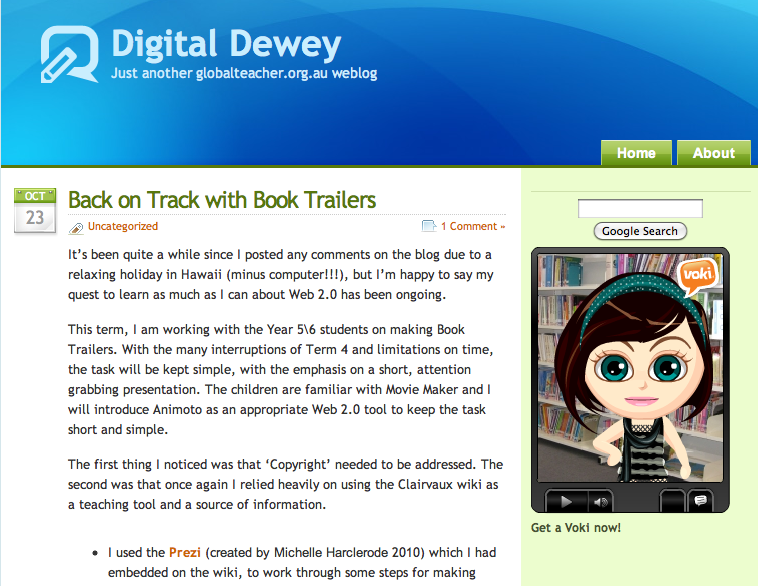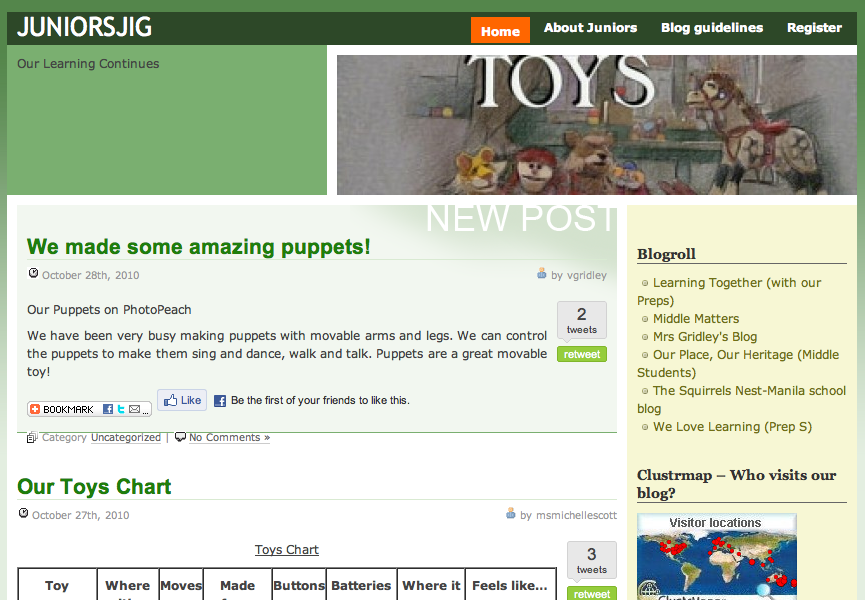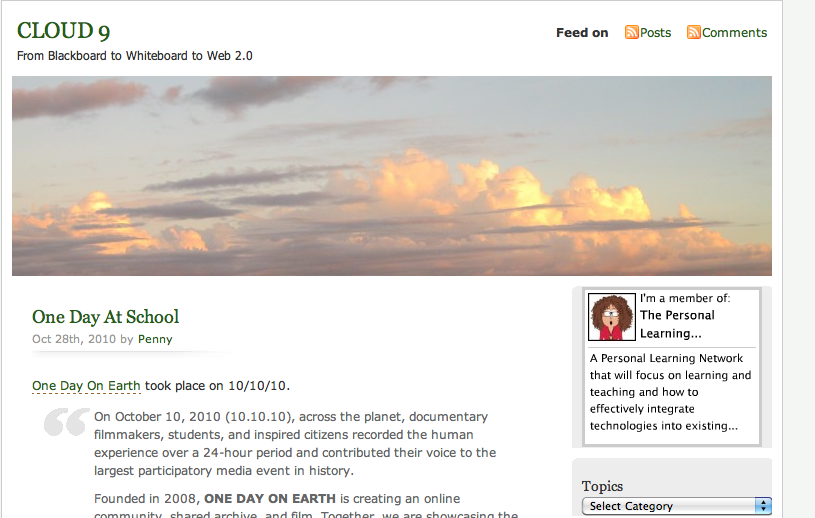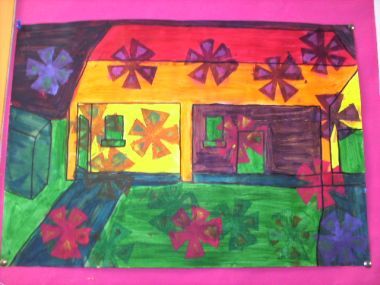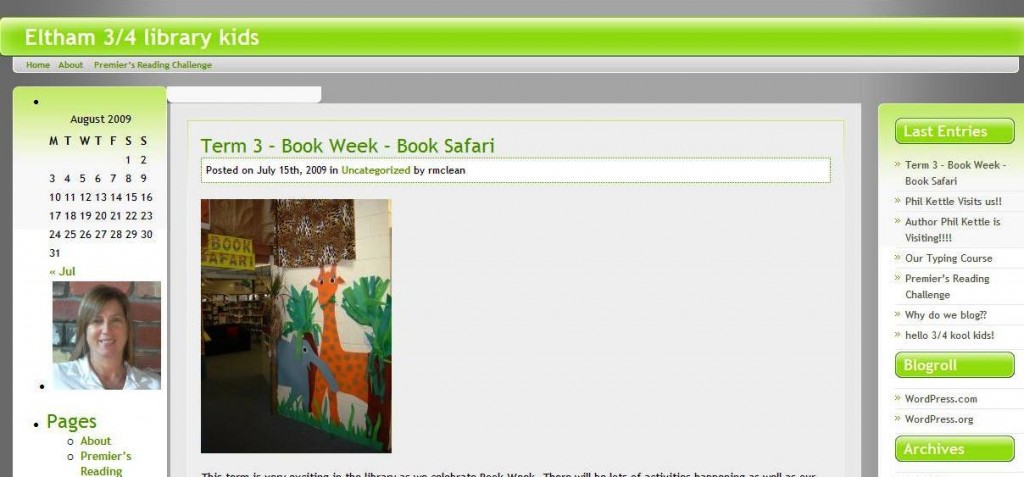Former Head of Library at The King David School, Bev Novak has been developing an interesting blog. Bev uses her blog as a forum for writing about, processing and sharing her learning with other educators. Bev generously shares her learning journey on her blog and here, for readers of Bright Ideas. I recently read that a tweet that said that “all teachers should blog”. Bev’s blog shows what can be achieved in a short amount of time and if you have not yet started your own blog, Bev’s newly found enthusiasm for blogging may well set you on your way!
Just on six months ago, I had absolutely no idea what a blog was, had never read one and certainly had no idea how to create one. Life changed dramatically though when I decided to enrol in the VicPLN program being run by SLAV in conjunction with SLV. That first evening of peeking at the program content is forever seared into my memory. The list of tasks to be completed was daunting to say the least! But my heart froze when I realized that the very first task involved creating a blog. “A what?!” I thought!! A blog, I calmly said to myself. Skimming down the tasks posed for that first week, I realized I had no choice. Every task listed for the week involved writing a response on my blog. “Ugh!!! What have I gotten myself into?!” was the next thought that passed through my mind.
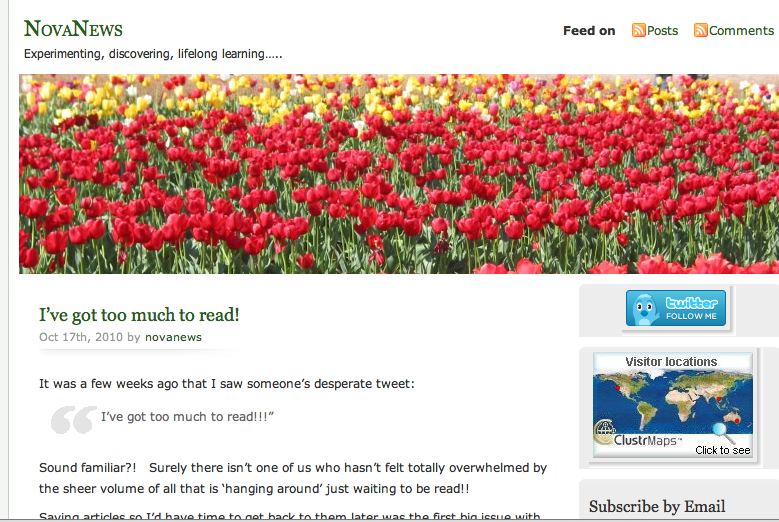
Deciding that the best advice I could follow was that which I always give to nervous looking kids about to sit a test or exam, I took three deep breaths and began following the instructions set down. It was, I recollect, a very long Saturday night!
But I did it! That feeling of seeing my words floating out into cyberspace really was fantastic. An incredible sense of achievement and success, unlike any I had experienced in a long time, flooded through me! While I admit that the early stages of creating the blog were akin to writing on a wall in Chinese without knowing if the paper was upside down or inside out, a certain familiarity soon set in. The ‘dashboard’ and I soon became friends. Because I was working in the warm comfy environs of the VicPLN, I often experienced the warm fuzzy feelings of others lending a hand, helping me figure out the seemingly impossible. And of course, the warm guidance and encouragement of our wonderful mentor – Judith Way – was there, every step of the way.
It has only been at the completion of the VicPLN that I started to look back and consider the process I had worked through. It was indeed a journey, a journey that had a recognizable path in which my blog moved from being a spot to record what I had read, played with and discovered over the previous week, to that of a personal storage spot for links and information I had gathered. Along the way, as I recognized I had an audience, I accepted that I could also use my blog as a place to showcase my own achievements using a range of presentation tools to which I had been exposed through the program. The final stage of my journey has been understanding that blogging is a dynamic process, one in which readers can comment on the content of a blog or indeed on the comments posted by others, a process which, by its very nature, enables the interaction of people with similar interests to connect and share with each other. In turn, for me, this has been a fantastic way to expland my Personal Learning Network.
Today, I am totally hooked on blogging. Reading the blogs of others which incorporate thoughts, ideas and knowledge, has become an addictive occupation for me. So too has the writing my own blog. Feedback received in the form of comments on my blog or email or Twitter exchanges received over the week, feed my enthusiasm. Sharing insights gleaned from various readings, experiences and knowledge acquired from a vast range of sources is currently the thrust of my blog. Where it may head in the future however, I do not yet know. But to know that I contribute to the growth of others in the same way that others contribute to my growth leaves me with a warm afterglow. To those of you out there who’ve not yet discovered the blogosphere, I encourage you to spend the time exploring. Come join the amazing journey. While you have much to contribute you also have a great deal to learn. And, after all, aren’t we all lifelong learners?
Thanks Bev for your unbridled enthusiasm for blogging and learning and for spreading the word via Bright Ideas!

